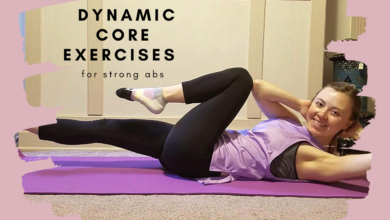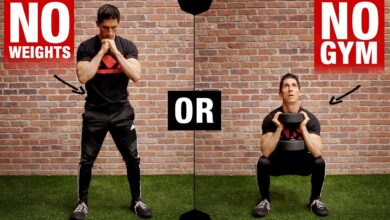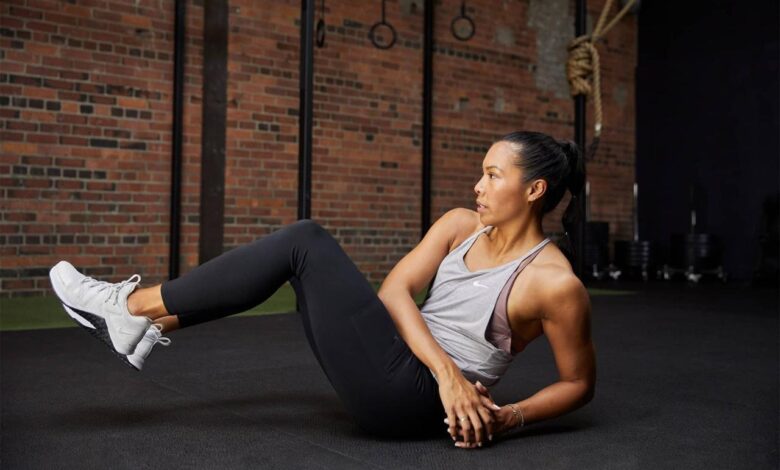
Essential Plank Workout: Strengthen Your Core
Essential plank workout, a simple yet powerful exercise, is the foundation for a strong and stable core. It’s a versatile move that can be adapted to different fitness levels and goals, making it a staple in many workout routines. From beginners to seasoned athletes, the plank offers numerous benefits, including improved posture, increased muscle definition, and enhanced overall strength.
This guide will delve into the fundamentals of the plank, exploring its variations, building effective workout routines, and addressing common questions. Whether you’re looking to sculpt your core, improve your balance, or simply enhance your overall fitness, this comprehensive guide will equip you with the knowledge and tools to master the plank and unlock its full potential.
The Plank Exercise
The plank exercise is a foundational movement that engages multiple muscle groups, primarily targeting your core. It is a static exercise that involves holding a specific position, requiring strength and stability to maintain proper form. This exercise is a cornerstone of many fitness routines, offering a variety of benefits for overall fitness and well-being.
Benefits of the Plank Exercise
The plank exercise provides numerous benefits for your body, including:
- Enhanced Core Strength:The plank directly engages the core muscles, including the rectus abdominis, obliques, and transverse abdominis, strengthening them to support your spine and improve posture.
- Improved Stability:By strengthening the core, the plank enhances overall stability, reducing the risk of injuries and improving balance.
- Increased Muscle Endurance:Holding the plank position for an extended period builds muscle endurance, making it easier to perform other exercises and activities.
- Improved Posture:A strong core helps maintain proper posture, reducing back pain and improving overall body alignment.
- Reduced Risk of Back Pain:Strengthening the core muscles helps stabilize the spine, reducing the risk of lower back pain.
- Enhanced Athletic Performance:A strong core is essential for various sports and activities, improving power, balance, and agility.
Plank Exercise Variations
The plank exercise offers several variations that target specific muscle groups and challenge your body in different ways.
- High Plank:This variation is the most common and involves holding a push-up position with your hands directly beneath your shoulders. It primarily targets the rectus abdominis and obliques, improving core strength and stability.
- Forearm Plank:This variation involves resting on your forearms with your elbows directly beneath your shoulders. It emphasizes the lower core muscles, including the transverse abdominis, and improves stability and endurance.
- Side Plank:This variation involves supporting your body on one forearm and one foot, engaging the obliques and core muscles on one side. It improves core strength and stability, as well as hip flexibility.
How to Perform a Plank Exercise
Performing a proper plank is essential to maximize its benefits and avoid injuries. Follow these steps for a standard high plank:
- Start Position:Begin in a push-up position with your hands directly beneath your shoulders, fingers pointing forward. Your body should form a straight line from your head to your heels.
- Engage Core:Tighten your abdominal muscles and engage your core, pulling your belly button towards your spine.
- Hold the Position:Hold this position for as long as you can maintain proper form. Start with shorter durations and gradually increase the time as your core strength improves.
- Breathing:Breathe deeply and evenly throughout the exercise. Do not hold your breath, as this can strain your body.
- Proper Form:Maintain a straight line from your head to your heels, ensuring your body is not sagging or arching. Keep your core engaged and your glutes tight.
Building an Essential Plank Workout
The plank is a fundamental exercise that strengthens your core muscles, which are essential for everyday activities and athletic performance. By incorporating different plank variations and hold times into your workout routine, you can progressively challenge your core and enhance its strength and stability.
This blog post will guide you through building an essential plank workout, starting with a beginner-friendly routine and gradually progressing to intermediate and advanced levels.
Beginner Plank Workout
This routine is designed for individuals new to plank exercises or those seeking to build a solid foundation.The beginner plank workout consists of three variations:
- Standard Plank: Hold for 30 seconds, rest for 30 seconds, repeat 3 times.
- Forearm Plank: Hold for 20 seconds, rest for 20 seconds, repeat 3 times.
- High Plank: Hold for 15 seconds, rest for 15 seconds, repeat 3 times.
This workout can be performed 2-3 times per week, allowing for rest days to promote muscle recovery.
Intermediate Plank Workout
This routine incorporates advanced variations and increased hold times, challenging your core further.The intermediate plank workout consists of four variations:
- Side Plank: Hold for 30 seconds on each side, rest for 30 seconds, repeat 3 times.
- Forearm Plank with Leg Raise: Hold for 20 seconds, rest for 20 seconds, repeat 3 times.
- Plank with Arm Reach: Hold for 15 seconds, rest for 15 seconds, repeat 3 times.
- Plank with Knee Drive: Hold for 10 seconds, rest for 10 seconds, repeat 3 times.
This workout can be performed 2-3 times per week, ensuring proper form and adequate rest.
Advanced Plank Workout
This routine challenges your core with dynamic movements and longer holds, pushing your limits and enhancing core strength and stability.The advanced plank workout consists of five variations:
- Plank with Mountain Climbers: Perform for 30 seconds, rest for 30 seconds, repeat 3 times.
- Plank with Side Kick: Perform for 20 seconds on each side, rest for 20 seconds, repeat 3 times.
- Plank with Toe Tap: Perform for 15 seconds, rest for 15 seconds, repeat 3 times.
- Plank with Shoulder Tap: Perform for 10 seconds, rest for 10 seconds, repeat 3 times.
- Plank with Lateral Shuffle: Perform for 30 seconds, rest for 30 seconds, repeat 3 times.
This workout can be performed 2-3 times per week, allowing for sufficient rest and recovery.
Remember: It is crucial to maintain proper form throughout each plank variation. Focus on engaging your core muscles, keeping your body in a straight line from head to heels, and breathing steadily. If you experience any pain, stop the exercise and consult with a healthcare professional.
Incorporating Plank Variations into Your Routine
Plank variations are a fantastic way to challenge your core muscles and enhance your overall fitness. By incorporating different plank variations into your workout routine, you can target various muscle groups, improve stability, and prevent boredom.
Integrating Plank Variations into Different Fitness Programs
Plank variations can seamlessly integrate into various fitness programs, adding variety and intensity to your workouts.
Yoga
Plank variations are commonly incorporated into yoga sequences, enhancing core strength and stability. For example, the Chaturanga Dandasana (low plank) is a fundamental pose in yoga that strengthens the core, shoulders, and arms. Other plank variations, like the Forearm Plank and Side Plank, can be incorporated into yoga flows for a deeper core engagement.
Pilates
Pilates is renowned for its emphasis on core strength and stability, making plank variations an integral part of its practice. Plank variations like the Hundred, Roll Down, and Teaser are common in Pilates classes, strengthening the core, improving posture, and promoting spinal stability.
HIIT Workouts
HIIT (High-Intensity Interval Training) workouts benefit from the inclusion of plank variations, providing a challenging and effective way to boost core strength and endurance. Integrating plank variations into HIIT circuits can elevate heart rate, burn calories, and improve overall fitness.
For instance, a HIIT workout could include alternating between high-intensity exercises like burpees and plank variations like the High Plank or Side Plank for increased core engagement.
Modifying Plank Variations for Different Fitness Levels and Goals
Modifying plank variations to suit different fitness levels and goals is crucial for safe and effective exercise.
Beginner Modifications
For beginners, starting with a basic plank and gradually increasing hold time or incorporating easier variations is recommended.
- Shortening the hold time: Start with holding a basic plank for 10-15 seconds, gradually increasing the duration as you gain strength.
- Modifying the position: For beginners, a modified plank on the knees can be a good starting point, reducing stress on the wrists and core.
- Focusing on proper form: Prioritizing proper form over hold time is essential for beginners. Ensure a straight line from head to heels, engaging the core, and avoiding excessive arching or sagging of the back.
Advanced Modifications
Advanced exercisers can explore more challenging variations, increasing intensity and targeting specific muscle groups.
The essential plank workout is a great way to build core strength and improve posture. But, just like any other workout, it’s important to track your progress to see how you’re improving. You can use tracked data to monitor your hold times, reps, and even heart rate, and use that information to set new goals and adjust your training.
Check out these 3 ways to use tracked data to meet your goals for a more effective plank workout. By tracking your progress, you can ensure that you’re challenging yourself and seeing results, making your plank workouts even more rewarding.
- Adding weights: Holding weights during a plank increases resistance and challenges the core further. For example, holding dumbbells or resistance bands during a plank can enhance core strength and stability.
- Incorporating dynamic movements: Dynamic plank variations, like the Plank Jacks or Plank Walk-Outs, engage the core while adding cardiovascular benefits. These variations require coordination and control, challenging the core in a different way.
- Increasing hold time and reps: Advanced exercisers can gradually increase hold time for each plank variation, aiming for longer durations or more repetitions.
Tips for Modifying Plank Variations
- Listen to your body: Pay attention to your body’s signals and adjust the intensity or duration of plank variations as needed. Avoid pushing yourself beyond your limits, as this can lead to injury.
- Focus on proper form: Maintaining proper form is crucial for maximizing benefits and preventing injuries. Engage your core, keep your back straight, and avoid sagging or arching.
- Progress gradually: Gradually increase the intensity or duration of plank variations to avoid overexertion and allow your body to adapt. This approach helps prevent plateaus and promotes continuous improvement.
- Consult a professional: If you have any concerns or limitations, consult a certified personal trainer or physical therapist for guidance on modifying plank variations to suit your specific needs.
Safety and Form Considerations
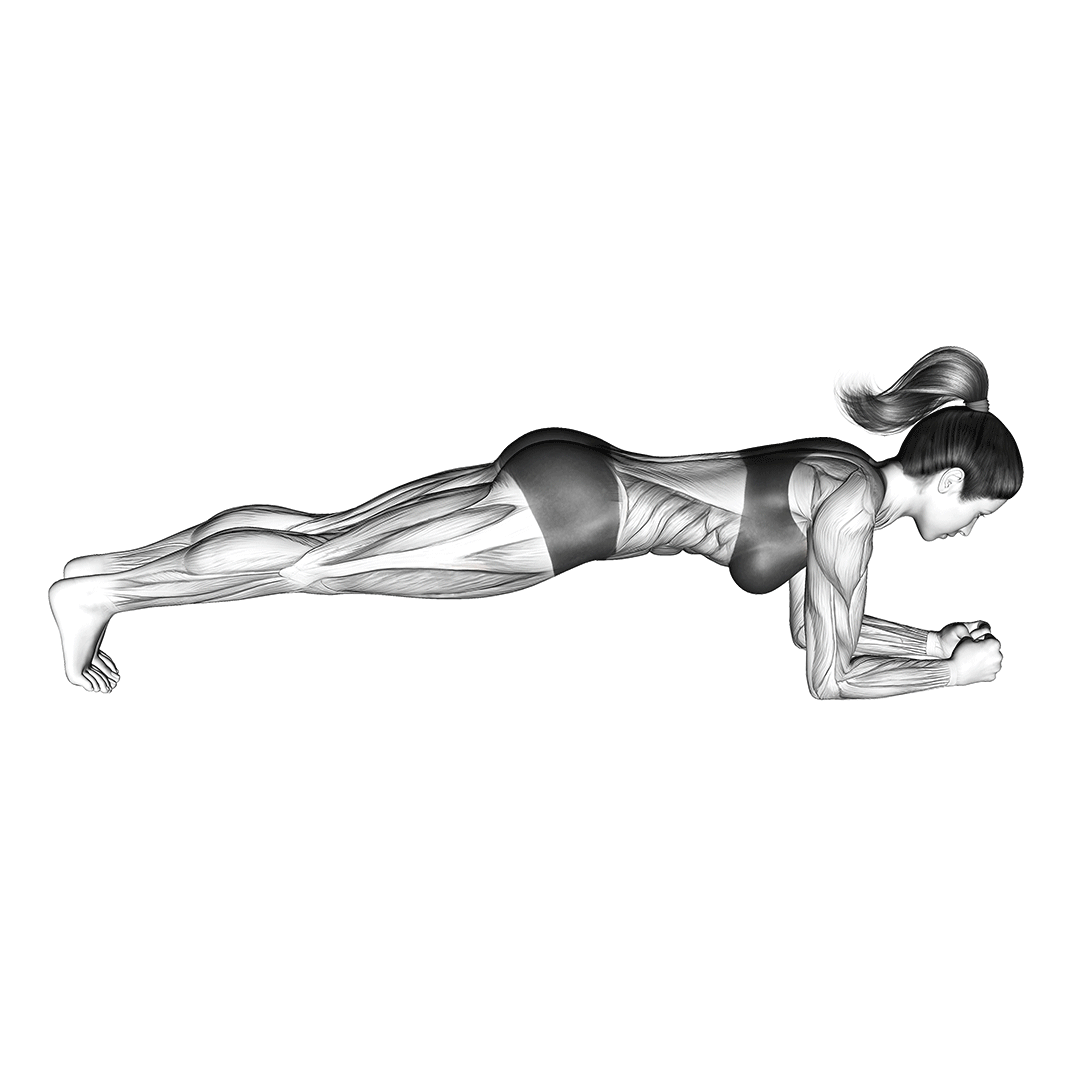
Plank exercises, while effective for core strength, require proper form to maximize benefits and minimize injury risk. Understanding common mistakes and implementing safety measures is crucial for a successful and injury-free plank routine.
Common Mistakes to Avoid
Common mistakes during planks can compromise form and increase the risk of injury. Understanding these mistakes allows you to focus on proper technique and prevent potential issues.
- Sagging hips:Allowing your hips to drop below the shoulders creates excessive strain on your lower back.
- Pushing your head forward:Looking straight ahead instead of keeping your neck in line with your spine puts unnecessary stress on your neck muscles.
- Rounding your back:A rounded back can lead to lower back pain and limit the effectiveness of the exercise.
- Gripping your toes too tightly:Over-tightening your toes can lead to foot cramps and unnecessary tension.
- Holding your breath:Holding your breath can restrict blood flow and increase tension in your body.
Maintaining Proper Form
Proper form is essential for maximizing the benefits of plank exercises while minimizing injury risk.
- Engage your core:Actively engage your abdominal muscles throughout the exercise, as if you’re pulling your belly button towards your spine.
- Maintain a neutral spine:Keep your back straight, avoiding any rounding or arching. Imagine a straight line from your head to your heels.
- Keep your head in line with your spine:Look straight down at the floor, avoiding tilting your head up or down.
- Engage your glutes:Actively engage your glutes to help stabilize your body and maintain proper alignment.
- Breathe deeply:Inhale and exhale normally throughout the exercise, avoiding holding your breath.
Modifications for Individuals with Specific Limitations
Plank exercises can be modified to suit individuals with specific limitations or injuries. These modifications help maintain the benefits of the exercise while accommodating individual needs.
- Forearm plank on knees:This modification reduces the strain on the wrists and core by supporting the body on the knees.
- Wall plank:This variation provides support from the wall, reducing the intensity and making it easier to maintain proper form.
- Plank with a pillow:Placing a pillow under your forearms can help to reduce pressure on your wrists.
- Side plank with knee on the ground:This modification reduces the strain on the hips and obliques by supporting one leg on the ground.
Alternative Exercises
If plank exercises are too challenging or uncomfortable, alternative exercises can be incorporated to target similar muscle groups.
- Bird dog:This exercise strengthens the core, back, and shoulders. It involves extending one arm and the opposite leg simultaneously while maintaining a neutral spine.
- Superman:This exercise strengthens the back muscles. It involves lying on your stomach and lifting your arms and legs off the ground.
- Dead bug:This exercise strengthens the core and improves stability. It involves lying on your back with your knees bent and your feet flat on the ground. You then extend one arm and the opposite leg simultaneously while keeping your lower back pressed against the ground.
Beyond the Plank
While the plank is a foundational exercise for core strength, it’s essential to diversify your routine to target all aspects of your core, including the obliques and lower back. This comprehensive approach leads to a more balanced and functional core, improving stability, posture, and overall fitness.
Additional Exercises for Core Strength
Strengthening your core goes beyond the plank. Engaging in a variety of exercises that target different muscle groups within your core ensures a well-rounded and functional core. These exercises can be incorporated into your workout routine alongside your plank variations.
- Russian Twists:This exercise primarily targets your obliques, the muscles that run along the sides of your torso. By twisting your torso from side to side while holding a weight, you engage these muscles, enhancing core stability and rotational strength.
- Bird Dog:This exercise focuses on both core stability and balance. By extending one arm and the opposite leg simultaneously while maintaining a neutral spine, you engage your core muscles to control the movement. This exercise also helps improve coordination and proprioception.
- Dead Bugs:This exercise targets your core, particularly your lower back and abdominal muscles. By extending your arms and legs in a controlled manner, you engage your core to stabilize your body and prevent excessive movement. This exercise helps strengthen your core and improve spinal stability.
- Superman:This exercise focuses on strengthening your lower back muscles. By extending your arms and legs while lying face down on the ground, you engage your lower back muscles to lift your body off the floor. This exercise helps improve back extension strength and spinal mobility.
Sample Core-Strengthening Routine
Here’s a sample routine that incorporates plank variations with other core-strengthening exercises:
| Exercise | Sets | Reps | Rest |
|---|---|---|---|
| High Plank | 3 | 30 seconds | 30 seconds |
| Forearm Plank | 3 | 30 seconds | 30 seconds |
| Side Plank (each side) | 3 | 30 seconds | 30 seconds |
| Russian Twists | 3 | 15-20 reps | 30 seconds |
| Bird Dog (each side) | 3 | 10-12 reps | 30 seconds |
| Dead Bugs | 3 | 15-20 reps | 30 seconds |
| Superman | 3 | 10-12 reps | 30 seconds |
Progressive Overload for Core Workouts
To continuously challenge your core and promote growth, you can gradually increase the intensity and difficulty of your workouts over time. Here are some ways to achieve progressive overload:
- Increase Hold Time:For plank variations, gradually increase the duration of your holds by a few seconds each week.
- Add Resistance:Incorporate weights, resistance bands, or stability balls into your exercises to increase the challenge.
- Increase Reps:Gradually increase the number of repetitions for each exercise as you become stronger.
- Introduce Variations:Explore different plank variations, such as the side plank, elbow plank, or raised leg plank, to challenge your core in new ways.
- Decrease Rest Time:Reduce the rest periods between sets to increase the intensity of your workout.
Plank Variations for Different Goals
The plank exercise, in its basic form, provides a foundational core strength challenge. However, by incorporating variations, you can target specific areas of your core, enhance your workout’s intensity, and achieve diverse fitness goals.
Plank Variations for Targeted Muscle Activation
Plank variations engage different muscle groups within your core. Understanding the primary muscle targets of each variation allows you to tailor your routine to your specific goals.
- Classic Plank:Targets the entire core, including the rectus abdominis (upper abs), transverse abdominis (deep core), obliques, and erector spinae (lower back). This is a great starting point for beginners and a foundation for more advanced variations.
- Forearm Plank:Similar to the classic plank, but with forearms resting on the ground, this variation increases the challenge on the wrists and forearms. It also places greater emphasis on the shoulders and upper back.
- High Plank:This variation, performed with hands directly under the shoulders, emphasizes the upper chest and shoulders. It also engages the core muscles, particularly the rectus abdominis and obliques, for stabilization.
- Side Plank:This variation focuses on the obliques and the serratus anterior, a muscle that helps stabilize the shoulder blade. It’s excellent for improving core stability and rotational strength.
- Reverse Plank:This variation strengthens the glutes, hamstrings, and lower back. It also engages the core muscles, particularly the rectus abdominis and transverse abdominis, for stabilization.
Plank Variations by Difficulty Level
Different plank variations offer varying levels of difficulty. You can progress through these variations as your strength and endurance improve.
| Plank Variation | Primary Muscle Targets | Difficulty Level |
|---|---|---|
| Classic Plank | Entire Core | Beginner |
| Forearm Plank | Entire Core, Wrists, Forearms | Intermediate |
| High Plank | Upper Chest, Shoulders, Core | Intermediate |
| Side Plank | Obliques, Serratus Anterior | Intermediate |
| Reverse Plank | Glutes, Hamstrings, Lower Back, Core | Advanced |
Incorporating Plank Variations into Your Routine
Plank variations can be incorporated into your routine based on your specific fitness goals:
- Weight Loss:To promote weight loss, include a variety of plank variations in your routine. The increased muscle engagement and calorie expenditure from these variations can contribute to a calorie deficit. For example, a combination of classic planks, side planks, and forearm planks can provide a comprehensive core workout, boosting metabolism and burning calories.
The essential plank workout is a fantastic way to strengthen your core, but it’s important to remember that it’s just one piece of the puzzle when it comes to weight loss. While holding a plank burns some calories, you might be wondering if does standing burn enough calories to aid weight loss to make a real difference.
The truth is, a balanced approach that includes regular exercise, a healthy diet, and possibly even standing more throughout your day is key to achieving your weight loss goals.
- Muscle Gain:For muscle gain, focus on progressively overloading your core muscles. This can be achieved by increasing the duration of your planks, incorporating weighted planks, or adding resistance bands. For instance, you could start with a 30-second classic plank and gradually increase the hold time to 60 seconds or more.
A strong core is essential for any workout routine, and the plank is a fantastic exercise to target those deep abdominal muscles. After a tough plank session, I love to reward myself with a healthy and delicious meal like this crockpot kale and sausage farrotto bowl.
It’s packed with flavor and nutrients, making it the perfect fuel for my next workout. A strong core and a balanced diet are the keys to a healthy and fit lifestyle.
Alternatively, you could add resistance bands to your plank for added challenge.
- Improved Posture:To improve posture, prioritize plank variations that strengthen the core muscles responsible for spinal stabilization. The classic plank, forearm plank, and side plank are particularly effective in this regard. By strengthening these muscles, you can improve your posture and reduce the risk of back pain.
Plank Progressions
The plank is a fantastic exercise for building core strength and endurance. But like any exercise, it’s important to progress gradually to avoid plateaus and injuries. Plank progressions involve gradually increasing the duration and intensity of your plank holds, challenging your core in new ways.
Plank Progression Strategies
Plank progressions are all about finding the right balance between challenging your core and preventing plateaus. Here’s how to approach them:
- Start with a comfortable duration: If you’re new to planks, begin with a hold of 10-20 seconds, gradually increasing by 5-10 seconds each session. This will build a foundation for longer holds.
- Focus on proper form: Maintaining correct form is crucial for effective and safe plank progressions. Ensure your body is in a straight line from head to heels, engaging your core, glutes, and shoulders.
- Listen to your body: If you feel any pain, stop immediately and adjust your form or reduce the duration. It’s better to under-challenge than risk an injury.
- Add time gradually: Once you can hold a plank for 30 seconds, aim for 45 seconds, then a minute, and so on. Remember, consistency is key. Aim for 2-3 sessions per week.
Understanding Isometric Training
Plank progressions are based on isometric training, a type of exercise where muscles are contracted without changing their length. In a plank, your core muscles are constantly engaged to maintain the isometric contraction.
- Isometric training builds strength and endurance: By holding a plank, you’re engaging your core muscles for an extended period, building both strength and endurance. This translates to better posture, reduced risk of back pain, and improved overall fitness.
- Isometric training is efficient: Unlike dynamic exercises like crunches or sit-ups, planks require minimal movement, making them an efficient way to target the core.
- Isometric training complements dynamic exercises: Planks can be a great complement to dynamic core exercises, providing a different type of challenge and enhancing overall core strength.
Advanced Plank Variations, Essential plank workout
Once you’ve mastered the basic plank, you can challenge your core further with advanced variations. These variations introduce new angles and demands, further enhancing core strength and endurance.
- Side plank: This variation targets the obliques and side core muscles. Start in a standard plank position, then rotate your body to the side, supporting your weight on one forearm and your feet. Maintain a straight line from head to heels.
- Forearm plank with leg raise: This variation increases the challenge by engaging the hip flexors and lower back muscles. From a forearm plank position, lift one leg off the ground, keeping it straight and aligned with your body. Hold for a few seconds before lowering the leg back down and repeating with the other leg.
- Plank with arm raise: This variation strengthens the shoulders and core stability. From a forearm plank position, slowly raise one arm off the ground, keeping it straight and aligned with your body. Hold for a few seconds before lowering the arm back down and repeating with the other arm.
- Plank with hip extension: This variation targets the glutes and hamstrings. From a forearm plank position, extend one leg back, keeping it straight and aligned with your body. Hold for a few seconds before lowering the leg back down and repeating with the other leg.
Progressive Plank Time Extensions
As you build strength and endurance, you can gradually increase the duration of your plank holds. This is a great way to challenge your core and continue making progress.
- Start with small increments: Once you can hold a plank for a minute, aim for 1 minute and 15 seconds, then 1 minute and 30 seconds, and so on. This gradual progression ensures you don’t overload your core.
- Use a timer: Setting a timer can help you track your progress and stay motivated. As you increase the duration, aim for 3-4 sets of plank holds, with short rest periods in between.
- Don’t forget to breathe: Remember to breathe deeply throughout your plank holds. Holding your breath can lead to strain and discomfort.
Plank Workout for Beginners
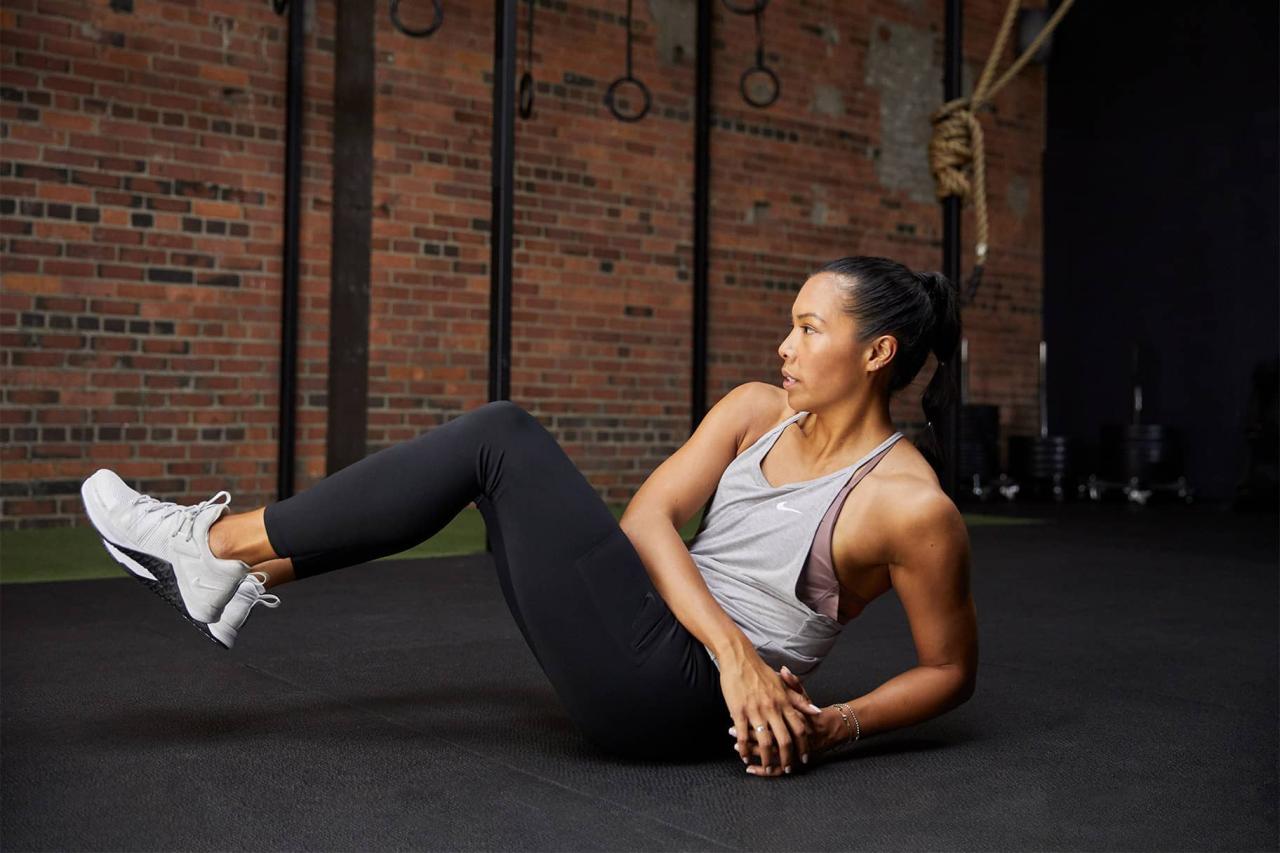
Starting a plank workout can be a fantastic way to build core strength and improve overall fitness. However, if you’re new to planks, it’s important to start slowly and gradually increase the duration and intensity. This beginner-friendly plank workout routine will guide you through the process.
Beginner Plank Workout Routine
This routine is designed for beginners and can be adjusted based on your fitness level. You can start with a shorter hold time and gradually increase it as you feel stronger.
- Warm-up:Begin with a 5-minute light warm-up, such as arm circles, leg swings, and torso twists. This prepares your muscles for the plank exercise.
- Plank Hold:Start with a 10-second hold, resting for 30 seconds between each set. Repeat this for 3 sets.
- Plank Variations:As you progress, you can incorporate variations like the high plank, forearm plank, and side plank. These variations target different muscle groups and add variety to your workout.
- Cooldown:After your plank workout, finish with a 5-minute cooldown, stretching your core muscles and allowing your body to recover.
Tips for Beginners
- Proper Form:Maintaining proper form is crucial to avoid injuries and maximize the benefits of planks. Ensure your body is in a straight line from head to heels, with your core engaged.
- Start Short:Don’t be discouraged if you can only hold a plank for a few seconds initially. Gradually increase the hold time as you become stronger.
- Listen to Your Body:Pay attention to your body’s signals. If you feel any pain, stop immediately and rest.
- Consistency is Key:Aim to incorporate plank workouts into your routine at least 2-3 times a week. Consistency is crucial for seeing results.
Motivation and Encouragement
Remember, everyone starts somewhere. Be patient with yourself and celebrate your progress. As you become more comfortable with planks, you’ll notice a difference in your core strength and overall fitness.
Plank Workout for Intermediate and Advanced Levels
Plank exercises are a fantastic way to strengthen your core and improve your overall fitness. If you’re ready to take your plank game to the next level, this guide will help you design a comprehensive plank workout routine for intermediate and advanced fitness levels.
We’ll incorporate advanced variations, longer holds, and challenging modifications for experienced individuals, providing guidance on how to progress through the routine and increase the difficulty level over time.
Advanced Plank Variations, Essential plank workout
Advanced plank variations add complexity and challenge to your core workout. Here are a few examples:
- Side Plank with Leg Raise:Start in a side plank position, with your forearm on the ground and your body in a straight line. Raise your top leg towards the ceiling, engaging your obliques and hip flexors. Lower the leg back down and repeat.
- Plank with Arm Reach:While in a standard plank position, extend one arm forward, reaching towards the floor. Keep your body stable and avoid swaying. Return to the starting position and repeat with the other arm.
- Plank with Leg Extension:From a plank position, extend one leg backward, keeping your core engaged and your body in a straight line. Hold for a few seconds, then return to the starting position and repeat with the other leg.
- Plank with Shoulder Tap:Start in a plank position, then tap your shoulder with one hand, maintaining a stable core and avoiding swaying. Repeat with the other hand.
- Plank with Knee Drive:From a plank position, bring one knee towards your chest, keeping your core engaged and your body stable. Return to the starting position and repeat with the other knee.
Increasing Plank Hold Duration
For intermediate and advanced fitness levels, gradually increasing the hold duration of your planks is an effective way to build strength and endurance.
- Start with a comfortable hold:Begin by holding a standard plank for 30-60 seconds. As you get stronger, gradually increase the hold time by 5-10 seconds each session.
- Set realistic goals:Aim for a hold duration of 1-2 minutes for each plank variation. You can even try holding for 3-5 minutes for a true challenge.
- Focus on form:Maintaining proper form is crucial, even as you increase the hold time. If you feel your form breaking down, shorten the hold or take a break.
Challenging Modifications for Advanced Fitness
Advanced fitness enthusiasts can explore challenging modifications to their plank routine, including:
- Elevated Plank:Place your forearms on a bench or elevated platform, increasing the difficulty and range of motion.
- Plank with Weighted Ball:Hold a weighted ball in front of your chest while maintaining a plank position. This adds resistance and challenges your core stability.
- Plank with Resistance Band:Wrap a resistance band around your ankles while in a plank position. Perform leg raises or other variations, increasing the resistance and activating your core muscles further.
Progressing Through the Routine
Gradually increasing the difficulty and complexity of your plank workout is key to continued progress.
- Start with a basic plank routine:Begin with a simple plank workout, including standard plank variations and hold durations you can comfortably manage.
- Increase hold times:Gradually increase the hold time for each variation by 5-10 seconds each session.
- Introduce new variations:Once you’ve mastered the basic variations, incorporate more challenging ones like side planks, plank with arm reach, or plank with leg extension.
- Add modifications:For advanced fitness levels, introduce modifications like elevated planks, weighted balls, or resistance bands to further challenge your core.
- Listen to your body:Pay attention to your body’s signals and adjust the workout accordingly. If you feel any pain, stop and rest.
Plank Workout for Specific Goals
Planks are a fantastic exercise for building core strength, but they can also be tailored to target specific fitness goals. By incorporating different plank variations and adjusting your workout routine, you can achieve your desired results, whether it’s weight loss, muscle gain, or improved posture.
Plank Workout for Weight Loss
Plank exercises can help you lose weight by increasing your metabolic rate and burning calories. Here’s how to tailor a plank workout for weight loss:
- High-Intensity Interval Training (HIIT):Incorporate plank variations into your HIIT workouts. Alternating between high-intensity planks (like the side plank or the forearm plank) and rest periods can boost your metabolism and burn more calories.
- Increase Time and Frequency:Gradually increase the duration of your planks and the frequency of your workouts. As you get stronger, aim for longer holds and more frequent sessions to maximize calorie burn.
- Combine with Cardio:Complement your plank workouts with cardio exercises like running, swimming, or cycling. This combination will create a calorie deficit and help you lose weight effectively.
Plank Workout for Muscle Gain
Planks are an excellent exercise for building core strength and muscle mass. Here’s how to tailor a plank workout for muscle gain:
- Progressive Overload:Gradually increase the difficulty of your plank variations by adding weights, increasing the hold time, or performing more repetitions. This will challenge your muscles and stimulate growth.
- Focus on Compound Variations:Incorporate compound plank variations like the side plank with a dumbbell or the plank with a medicine ball to work multiple muscle groups simultaneously.
- Proper Nutrition:Ensure you’re consuming enough protein to support muscle growth. Aim for 0.8-1 gram of protein per pound of body weight daily.
Plank Workout for Improved Posture
Planks can strengthen the muscles that support your spine, leading to improved posture. Here’s how to tailor a plank workout for posture improvement:
- Focus on Proper Form:Maintain a neutral spine and engage your core muscles throughout each plank variation. This will ensure you’re working the right muscles for posture correction.
- Include Stability Exercises:Incorporate plank variations that challenge your stability, such as the single-arm plank or the single-leg plank. These exercises strengthen the muscles that control your posture.
- Practice Regularly:Consistency is key to improving posture. Aim for at least 3-4 plank workouts per week to see noticeable results.
Last Recap: Essential Plank Workout
Mastering the plank isn’t just about achieving a strong core; it’s about building a foundation for a healthier, more balanced you. By incorporating various plank variations into your routine and understanding proper form, you can unlock a world of benefits, from improved posture and reduced back pain to increased strength and stability.
So, embrace the challenge, embrace the burn, and watch as your core transforms into a powerhouse of strength and resilience.



